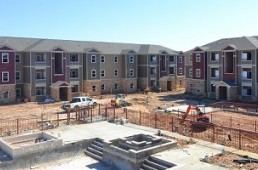
December 16, 2016 | by Michael Wilt
Categories: Affordable Housing, Construction, Rental Housing
One of the most common reasons neighborhood associations oppose affordable rental housing developments near them is the worry that affordable rental communities will drag down surrounding home values. But a Trulia study released November 16th found that those fears are largely not supported by evidence.
Using data from 20 U.S. metro areas, the study determined "there is no statistically significant difference in price per square foot when comparing properties near a low-income housing project and those farther away."
The Trulia report went on to state, "[t]he bottom line for NIMBYs [Not In My Backyard individuals] who fear that property values will take a hit when a low-income housing project locates nearby is that their anxiety is largely unfounded."
So, how did Trulia determine this? They looked at 3,083 developments financed through the Low-Income Housing Tax Credit (LIHTC) program that were built between 1996 to 2006, and compared home values between homes close to a development and homes a little farther away. They selected the ten year period to make sure data wasn't skewed by the housing crisis.
Trulia found that values near a development (within 2,000 feet) didn't drop when compared to values a little farther away (within 2,001 - 4,000 feet) after a LIHTC development opened its doors.
These are the key findings summarized in a Trulia blog post:
Although the study didn’t look at any metro areas in Texas, this is a topic of discussion in communities across the state as developers and decision makers deliberate about where to place affordable housing developments. Neighborhood support carries a lot of weight in the state’s LIHTC competitive application process.
Frequent objections from neighborhood associations worried about declining property values can make finding a suitable location for an affordable housing development that much more difficult.
This isn't to say that neighborhood input isn't important when deciding where to place affordable housing because it is important to have community support for any development whether affordable or not. The key takeaway from the Trulia study is that one of the most common objections to affordable housing developments — the fear of declining property values — is not supported by evidence.
On the House blog posts are meant to provide general information on various housing-related issues, research and programs. We are not liable for any errors or inaccuracies in the information provided by blog sources. Furthermore, this blog is not legal advice and should not be used as a substitute for legal advice from a licensed professional attorney.
TSAHC reviews all blog comments before they are posted to ensure a positive experience for our online community. Off-topic comments; hostile, derogatory or deliberately insulting comments; and comments specifically promoting goods and services will not be posted.
Approved comments will be published in their entirety. Personal information will not be removed unless it pertains to someone other than the person submitting the comment. For more information, please see our Comment Posting Guidelines.
To remove a previously submitted and published comment, please contact Anna Orendain at [email protected].
If you have a question regarding any of TSAHC's programs, please contact us.
